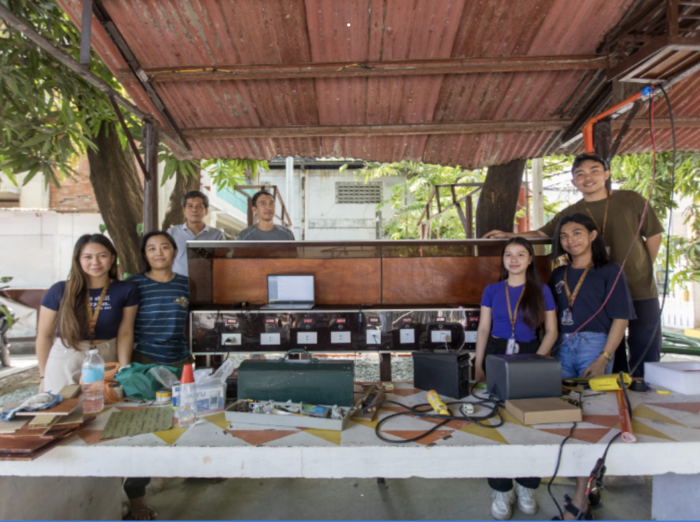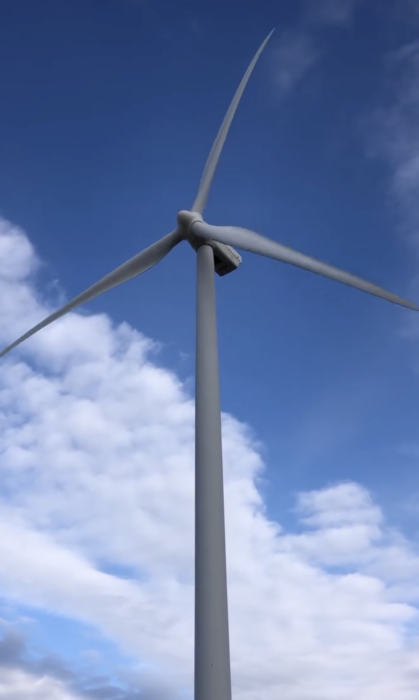It’s no secret that people and communities across the world are feeling the negative impacts of the climate crises caused by fossil fuels. The good news is: the tide is turning fast.
Renewable sources like solar power and wind energy are now cheaper, safer and more wide-spread than ever before. However, we still need to be mindful that they are set-up with care. Local communities should reap their benefits, not suffer because of them. Renewable energy projects must be reliable, affordable and safe for everyone, particularly those underserved by the fossil fuel era. We must not allow these projects to be set-up with the aim of lining the already-heavy wallets of rich CEOs.
Beyond reducing carbon emissions and providing energy to all, building a world powered by renewable energy is also about shifting power – away from corporations and towards ordinary people. We cannot replicate the same patterns of unfair power structures and historical injustices like extraction and exploitation created by fossil fuel companies. This system has hurt many communities across the world and left over 1 billion people in the dark. If we want a truly fair renewables-based energy system, it must be led by communities who have been left behind for far too long.
This is why we strongly believe in community-led energy initiatives. When locals set-up their very own renewable energy projects, they reclaim power from fossil fuel giants. And no, this is not only a pipe dream, it is already happening. In fact, as you are reading these words, several communities across the world are leading the charge on their energy future. Follow along with the blue boxes below for examples of such inspiring stories. These initiatives aren’t just fierce acts of resistance, they’re the building blocks of a future where our people, planet and nature can thrive. Here are some reasons why community-led energy are solutions that benefit everyone:
They bring economic benefits:
- They’re cheaper: Community energy projects can lower energy costs, directly addressing energy poverty by making cleaner energy accessible to everyone.
- Stable prices: Generating energy locally reduces dependence on volatile global energy markets, providing communities with greater economic stability and resilience.
- Challenging the big guys: Traditional energy systems are dominated by large corporations prioritizing profit over people. Community energy disrupts these monopolies, advocating for a fairer, more decentralized distribution of energy resources.
- Boosting the local economy: Small community energy projects can positively influence the local economy of the area by powering homes and local businesses.
Activists in Africa are installing solar panels along dirty energy pipelines to power homes and neighborhoods.

The village of Kijumba, in Uganda now has access to cleaner and safer electricity as locals have installed solar panels in the community. Photo: Desouza Nelson
They focus on justice:
- Everyone’s included: By involving marginalized and underserved groups – often overlooked or exploited by traditional fossil fuel companies – community energy fosters a more equitable energy system.
- Addressing past injustices: Historically, low-income communities have borne the brunt of fossil fuel extraction and its consequences. Community-led energy projects offer these communities cleaner, more sustainable energy options, helping to right historical wrongs.
- People are united: Collaborating on energy projects strengthens bonds within the community, fostering a shared sense of purpose and collective achievement.
- Sharing the benefits: These initiatives ensure that the benefits of renewable energy are shared equitably, rather than being concentrated in wealthier regions or among more powerful groups.
- Adapting to local needs: Community energy projects can be tailored to meet the needs of specific communities, providing energy access to remote or underserved areas that traditional systems often neglect.
- Honoring Indigenous lands: Large-scale energy projects have historically encroached on Indigenous lands without consent, leading to displacement and environmental injustice. Community energy can be designed to respect and integrate Indigenous knowledge, ensuring that energy production aligns with cultural values and land stewardship.
- Empowering Indigenous communities: Supporting Indigenous-led energy projects offers an opportunity to rectify historical injustices and empower Indigenous communities to manage their energy resources according to their cultural and environmental priorities.
They promote learning and growth:
- Building local skills: These projects often include training and education programs that build local expertise in renewable energy technologies, creating a skilled workforce that supports long-term sustainable development.
- Raising awareness: Community energy initiatives increase awareness about climate change and sustainability, encouraging more informed and engaged communities that are better equipped to advocate for climate justice.
Teachers are advocating for cheaper and climate-friendly energy for their schools in Manila, the Philippines

Students of Philippines Polytechnic University built solar charging stations to charge their mobile phones and gadgets sustainably. Photo: Nadia Cruz
They foster fairer governance:
- Energy independence: With community-led initiatives, local populations gain control over their energy choices, allowing them to prioritize sustainable and locally appropriate solutions over corporate-driven, fossil fuel-dependent models.
- Power to the people: These initiatives decentralize energy production meaning they shift control of energy sources and grids from large corporations to local communities, ensuring that energy decisions are made by and for the people.
- Greater accountability: With local ownership and control, these projects are typically more transparent and accountable to the communities they serve, in contrast to large, centralized energy companies.
- Building trust: By involving the community in decision-making processes, these projects build trust and a sense of shared responsibility, leading to more sustainable, long-lasting solutions.
Small cities in North America are setting up community-owned electricity utilities.

The city of Summerside in Canada has municipally owned solar and wind farms that channels profits back into community resources, and provides a more resilient power supply to its residents. Photo: 350 Canada Instagram
They’re beneficial for the environment and for people’s health:
- Environmental resilience: Community energy projects are designed with local contexts in mind, promoting sustainable practices that are tailored to the unique needs and environments of each community.
- Healthier communities: Marginalized communities frequently suffer from the health impacts of living near polluting industries. By promoting cleaner energy sources, community energy projects help reduce these health risks, addressing the environmental racism that contributes to health disparities.
- Cleaner local environment: Community energy prioritizes environmentally sustainable practices, reducing pollution and improving the quality of air, water, and soil, thereby benefiting the entire community, especially those historically most affected.
When communities lead their own energy projects it can inspire change in their areas and beyond, sparking new ideas and further action. Successful projects also encourage more innovative models of people-led energy production, storage, distribution and access, redistributing the power from a few to the hands of many.
Community-led projects are truly indispensable in building a global renewable energy democracy. We want to create energy systems in favor of the people it’s truly meant to serve.
Join Our Own Power Network if you want too want to be a part of this change, and help expand community-led renewable energy across the world!
Sources
The post Why community-led energy is the future appeared first on 350.

 5 hours ago
26
5 hours ago
26

